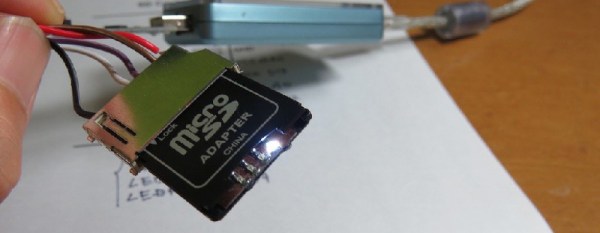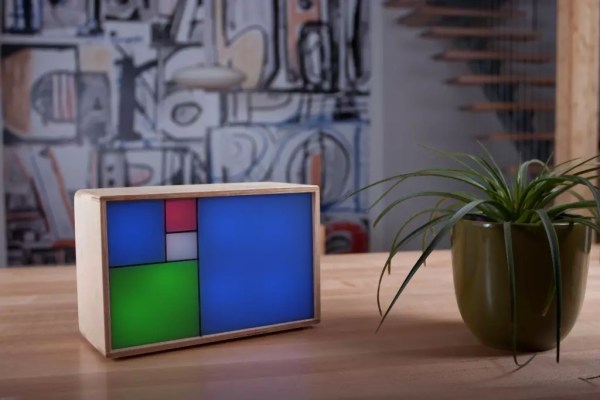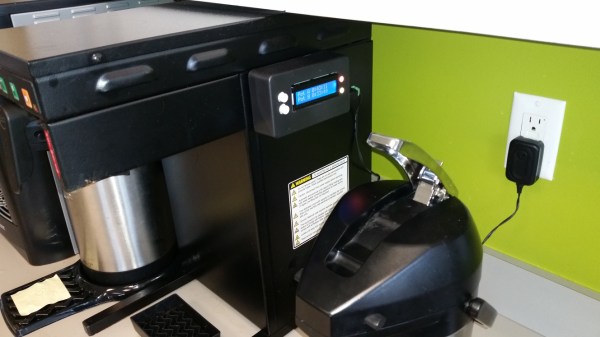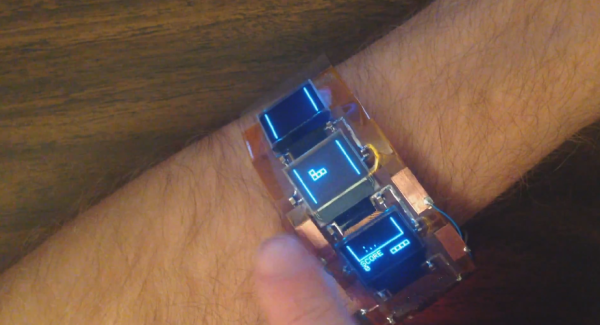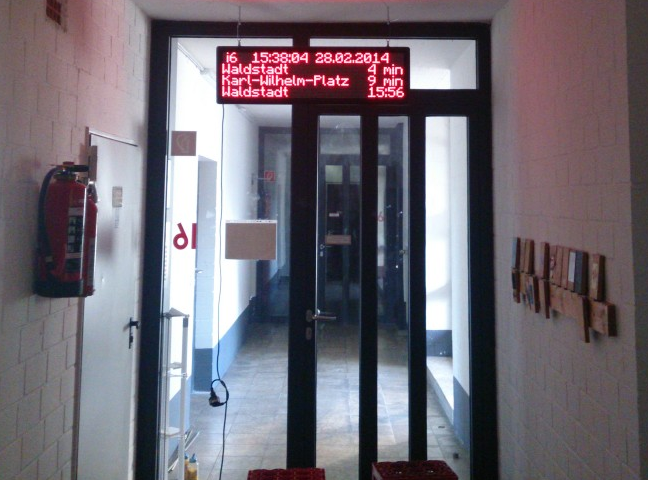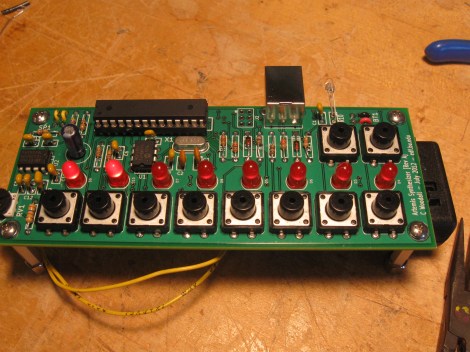About a year ago, Intel announced they’d be launching a new platform stuffed into an SD card. Imagine – an entire computer packaged into an SD card, with nine whole pins for power and I/O. Cooler heads prevailed, the Intel Edison was launched, but the idea stuck; why can’t you fit an Arduino in an SD card?
[kodera2t] found out there’s no real reason why you can’t put a small microcontroller inside an SD card. For his Hackaday Prize entry, he created the SDuino, and it’s exactly what it says on the tin: an ATMega328p stuffed into a microSD adapter.
Unlike the other microcontroller stuffed in an SD card platform — the Electric Imp, [kodera] is, for the most part, respecting the standard pinout for SD cards. The MISO and MOSI signals are reversed, of course, one of the grounds on the SD pinout is tied to an analog input pin on the microcontroller, and the chip select on the SD pinout is ignored completely. Other than that, it’s the closest you’re going to get to an SD card with a microcontroller.

